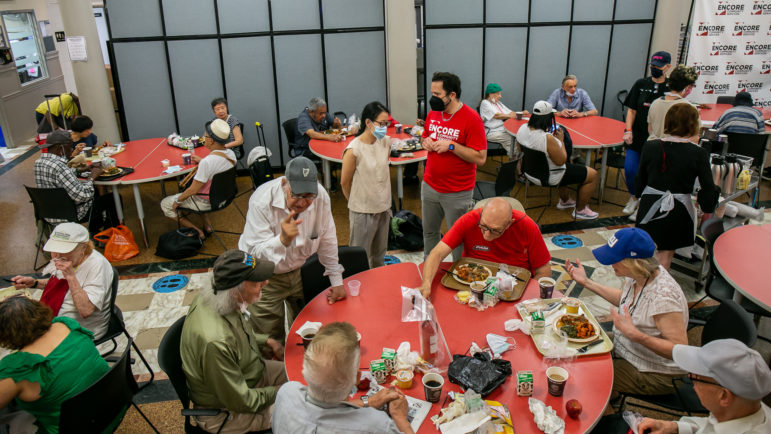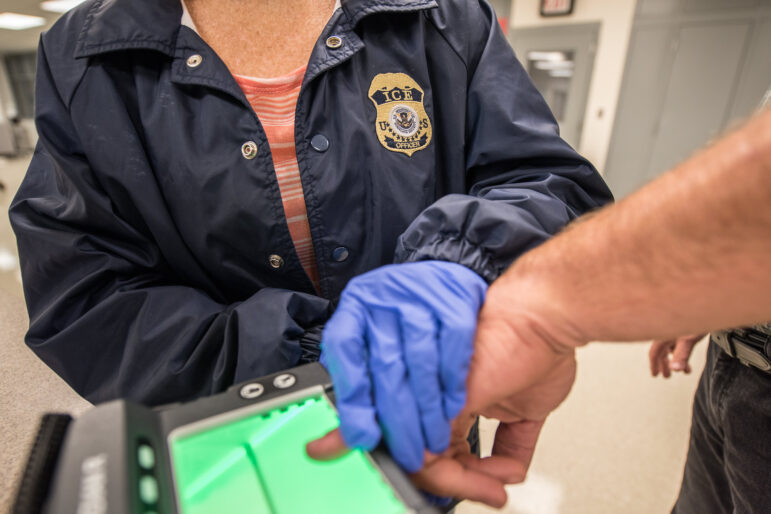When incumbent U.S. Rep. Carolyn Maloney, a former City Councilwoman originally from North Carolina, runs for a 10th term in Congress this fall, a young Democrat of Indian descent will challenge her. Reshma Saujani, 34, whose Indian parents found refuge in America, believes she has what it takes to give Maloney, 62, a run for her money this fall.
Whether Saujani – a Yale-educated attorney and former Democratic Party fundraiser – will find traction in the Manhattan-Queens 14th District, which gave Maloney 80 percent of the vote in 2008, remains to be seen. But she embraces the symbolism of her own candidacy as the first Indian-American woman to run for Congress from New York City.
“You’re seeing South Asians engaged in the fabric of activism all over this city” says the candidate. “I can’t tell you how many people come up to me after one of my speeches and say to me, ‘I always wanted to run and now I think I can.’ So regardless of the outcome of this race, we’ve already won.”
As scandal and mortality presage the passing of one of the city’s great ethnic groups of leaders – the African-American “Gang of Four” in Harlem – political observers wonder what cohort might be next to coalesce and rise. It could be another black group, or perhaps a clique of leaders who are Asian or Latino – two groups whose numbers in the halls of power lag their strength in the population.
No one “gang” has yet risen to the fore, but in a city of 8.3 million that’s about 34 percent white, 24 percent black, 11 percent Asian and 28 percent Hispanic (according to Department of City Planning figures from mid-decade), the complexion of elected leadership continues to change. In 2007 Brooklyn City Councilman Mathieu Eugene was elected, the first-ever Haitian-American officeholder in New York. And last year, John Liu ascended from Queens City Councilman to Comptroller, becoming the first Asian-American ever elected to a citywide post. Also making history is downtown Manhattan’s Margaret Chin, a Hong Kong native who last year became the first Asian-American woman ever elected to the City Council. With Peter Koo filling Liu’s seat on Council, the grand total of two is the most Asians ever in the body at once.
“Elected office is just one manifestation of overall political power, since there’s a vital grassroots component as well,” says Chung-Wha Hong, executive director of the New York Immigration Coalition, an advocacy group in Manhattan. “But we’re definitely seeing a greater awareness and participation among the city’s political system on the part of immigrant communities.”
Also significant, experts say, is the growing relevance of Latino voters. According to the Pew Research Center, New York has the fourth-largest Hispanic population in the country, with 1.5 million eligible voters. And a recent report from America’s Voice, an immigrant advocacy policy group in Washington D.C., predicts Latinos will exhibit major political clout at the polls in this year’s mid-term elections. But Herman Badillo, 80 – NYC’s first Puerto Rico-born borough president, Congressman and candidate for mayor – is skeptical about that political forecast as it relates to local races. “Unfortunately, Latinos aren’t coming out to vote as they should,” Badillo said. “And that’s because we have so few Latino candidates running to get people enthusiastic about coming out to vote.”
After former Bronx Borough President Fernando Ferrer lost a bid for City Hall in 2005, one politician who was regularly touted by Democratic Party pols as a serious contender for citywide office is ex-Bronx Borough President Adolfo Carrion, who now works as a domestic adviser in the Obama administration. “We’ll have to wait awhile before someone else emerges. I told [Carrion] that he actually had a chance to become city comptroller,” recalls Badillo. “I also told him that he’d be lost in the bureaucracy of the White House if he took that job, which he has been. Nobody has ever heard anything from him since then, right?”
Though Carrion may not be calling home to Bronx with regular updates, Latinos are hardly invisible in local politics, with nine members in the Black, Latino and Asian Caucus of the 51-member City Council, as well as representation in the state Assembly and Senate.
Meanwhile, the challenge for other ethnic groups in New York hasn’t been a lack of high-profile, citywide leader – but rather the sheer lack of any elected officeholders at all. The South Asian community, which boasts some 300,000 people, has been one of the city’s fastest-growing populations in recent years, with a large segment of Indian, Pakistani and Bangladeshi immigrants in the Jackson Heights section of Queens.
For an emerging generation of South Asians, there’s a growing desire to participate in local politics. “We’re seeing an awakening,” explains John Albert, 37 – a community organizer who was born in Chennai, India and made an unsuccessful 2002 bid for an Assembly seat in Flushing. “The South Asian vote is being diluted given how the district lines are drawn in Eastern Queens, and lawmakers will have to address that. When there’s no representation, the nuanced points of policy that impacts the overall community doesn’t get addressed by lawmakers.”
And while more electoral candidates are projected to emerge from New York’s under-represented communities, experts caution that campaigns strictly rooted in blanket identity politics will be difficult to wage due to population shifts unfolding in many neighborhoods. “Like everything else, people make assumptions that simply having numbers is enough,” explains Jose Sanchez, a professor of political science at Long Island University’s Brooklyn Campus. “But if you look at many Latino neighborhoods, for example, you aren’t talking about one group. There’s Puerto Ricans, Salvadorians, Mexicans, Cubans and Dominicans. And even though they speak the same language – there’s different interests at work.”
Meanwhile, prospective contenders face plenty of other obstacles. “We’ve seen so many candidates from immigrant communities fail because they don’t know what it takes to run a tactical campaign,” says Hong of NYIC, citing campaign financing difficulties and the lack of access to experienced consultants. “Anyone can be encouraged to run. But who’s going to give them the technical assistance or help them meet the basic threshold to run a credible campaign?”
Any serious candidate knows those are real issues. But Reshma Saujani says something else is driving her uphill battle against a popular incumbent: “The stories that you hear from people across the district about the economic hardships that they’re facing will break your heart. And that’s what we’re keeping at the forefront of this campaign.”








